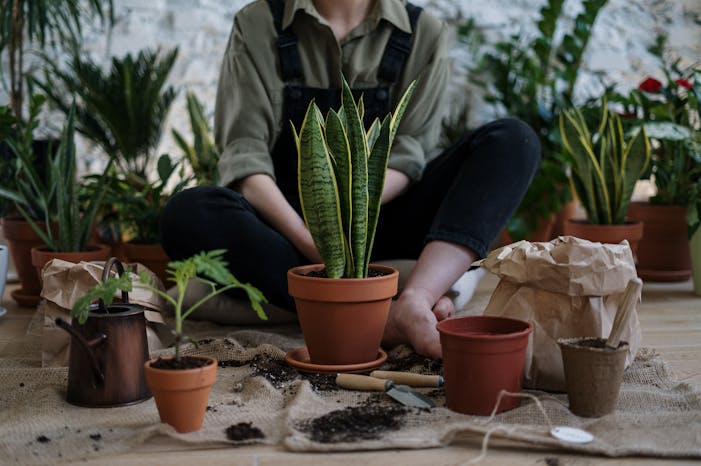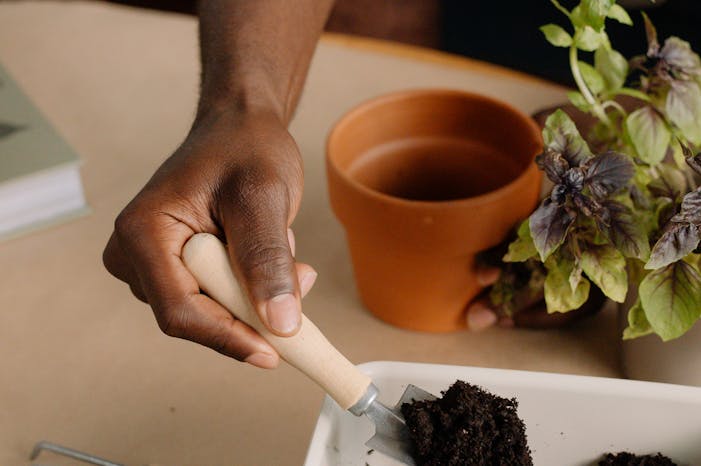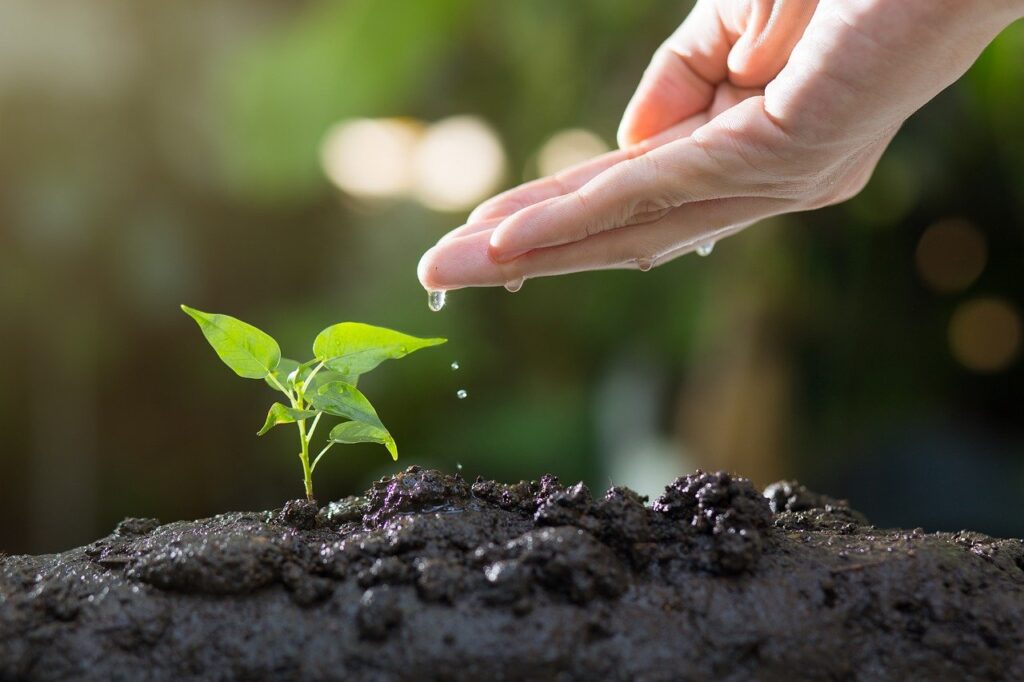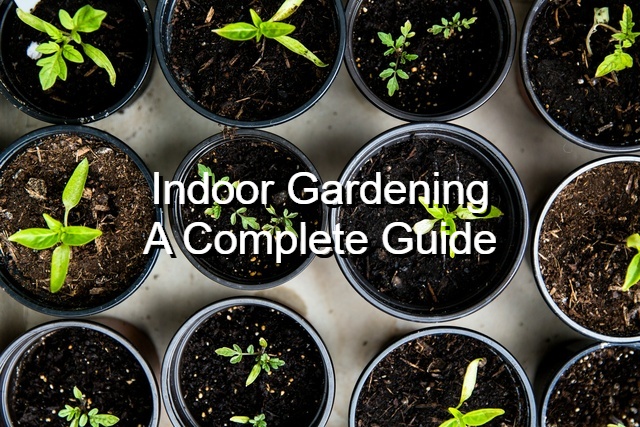Indoor gardening is more than just a trend—it’s a rewarding way to bring nature indoors, improve air quality, and even grow your own fresh produce. Whether you’re a beginner or an experienced plant parent, setting up an indoor garden requires some basic know-how and the right tools. This guide covers what you need for indoor gardening so you can create your lush, green oasis in no time!

Why Choose Indoor Gardening?
Indoor gardening is perfect for those with limited outdoor space or unpredictable weather conditions. It’s also an excellent stress-reliever, a source of healthy herbs and vegetables, and a way to beautify your living space. With proper planning and the right essentials, indoor gardening can fit any lifestyle or skill level.
1. The Perfect Space for Your Indoor Garden
Your first step in indoor gardening is choosing the right location. Light, temperature, and humidity all play a crucial role in plant health.
Consider These Factors:
- Natural Light: South-facing windows are ideal for plants that need bright light. North-facing windows are better for low-light plants.
- Temperature: Most indoor plants thrive in temperatures between 60-75°F (15-24°C).
- Humidity: Use a humidifier or place a tray of water near your plants if your home is too dry.
Pro Tip: If space is tight, consider vertical gardening or hanging planters.
2. Essential Tools for Indoor Gardening
Like any hobby, indoor gardening requires specific tools. Here’s what you need for indoor gardening when it comes to gear:
- Pots and Containers: Choose ones with proper drainage holes. Plastic pots are lightweight, while ceramic or terracotta pots add aesthetic value.
- Potting Mix: A high-quality, well-draining potting soil is key. Avoid garden soil, which can be too dense for indoor plants.
- Watering Can: Opt for one with a narrow spout for precise watering.
- Pruners or Scissors: Keep plants healthy by removing dead leaves and stems.
- Plant Stand or Shelves: These maximize space and improve accessibility.

3. Lighting for Indoor Gardening
Not all indoor spaces have sufficient natural light. That’s where grow lights come in handy.
Types of Grow Lights:
- LED Lights: Energy-efficient and long-lasting, they are great for all plant types.
- Fluorescent Lights: Affordable and suitable for herbs and leafy greens.
- Full-Spectrum Lights: These mimic natural sunlight and are perfect for flowering plants.
Position the lights 6-12 inches above your plants and keep them on for 12-16 hours daily, depending on your plant’s needs.
4. Choosing the Right Plants
Some plants are better suited for indoor gardening than others.
Easy-to-Care-For Options:
- Low-Light Plants: Snake plants, pothos, and peace lilies thrive with minimal light.
- Herbs: Basil, mint, and parsley are ideal for kitchen gardens.
- Succulents: Perfect for beginners, as they require less water.
- Vegetables: Tomatoes, peppers, and lettuce can grow indoors with proper care.
Pro Tip: Research each plant’s specific needs for light, water, and soil to ensure success.
5. Watering and Feeding Your Plants
Overwatering is one of the most common mistakes in indoor gardening. It’s crucial to understand your plant’s watering needs.
Tips for Proper Watering:
- Check the top inch of soil—if it’s dry, it’s time to water.
- Use room-temperature water to avoid shocking your plants.
- Avoid letting plants sit in standing water, which can cause root rot.
Fertilizers:
Indoor plants need occasional feeding to thrive. Use a balanced liquid fertilizer every 4-6 weeks for most plants. Organic options like compost tea are also great.
6. Maintaining Air Circulation
Good airflow helps prevent pests, mold, and mildew in your indoor garden.
How to Improve Air Circulation:
- Use a small fan to keep air moving.
- Avoid crowding plants too closely together.
- Open windows occasionally to let fresh air in.
7. Managing Pests in Indoor Gardening
Even indoors, plants can attract pests like spider mites, aphids, or fungus gnats.
Pest Prevention Tips:
- Inspect new plants for pests before bringing them home.
- Wipe leaves with a damp cloth to remove dust and pests.
- Use neem oil or insecticidal soap for natural pest control.
Pro Tip: Keep yellow sticky traps nearby to catch flying insects.
8. Humidity and Temperature Control
Indoor environments can be tricky when it comes to maintaining humidity and temperature.
Tips to Keep Plants Happy:
- Group plants together to create a microclimate.
- Use a pebble tray or mist plants regularly for added humidity.
Keep plants away from drafts, heaters, or air conditioners.

9. Decorating with Indoor Plants
Indoor gardening isn’t just functional—it’s also a way to enhance your home decor.
Styling Tips:
- Use matching pots for a cohesive look.
- Create a statement piece with a large plant like a fiddle-leaf fig.
- Mix and match plant heights for visual interest.
- Try hanging planters or macrame holders for a boho vibe.
10. Benefits of Indoor Gardening
Gardening indoors goes beyond aesthetics. Here’s how it can improve your life:
- Better Air Quality: Plants like spider plants and peace lilies filter toxins from the air.
- Stress Relief: Tending to plants has proven therapeutic benefits.
- Fresh Produce: Growing herbs and vegetables indoors ensures access to fresh ingredients.
11. Common Mistakes to Avoid
Learning what you need for indoor gardening includes knowing what not to do!
Mistakes to Watch For:
- Overwatering or underwatering plants.
- Using garden soil instead of potting mix.
- Ignoring a plant’s light requirements.
- Failing to clean pots and tools, which can spread diseases.
12. Advanced Indoor Gardening Tips
Once you’ve mastered the basics, take your indoor gardening to the next level.
Advanced Techniques:
- Hydroponics: Grow plants in water without soil.
- Smart Gardening Systems: Use automated lights and watering systems.
- Propagating Plants: Grow new plants from cuttings.
Final Thoughts
Indoor gardening is an enjoyable and rewarding hobby, whether you’re growing herbs on your kitchen counter or transforming your living room into a jungle. With the right tools, plants, and care, you’ll create a vibrant indoor garden that thrives year-round. Now that you know what you need for indoor gardening, it’s time to get started! Embrace the joy of nurturing plants and bring life into your home today.

